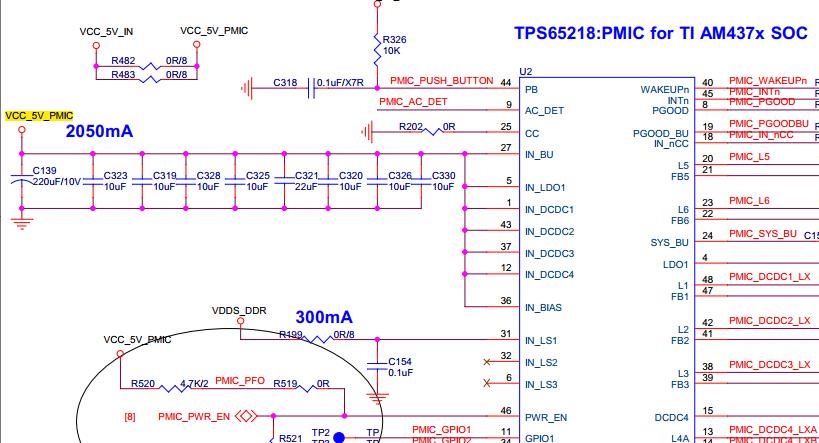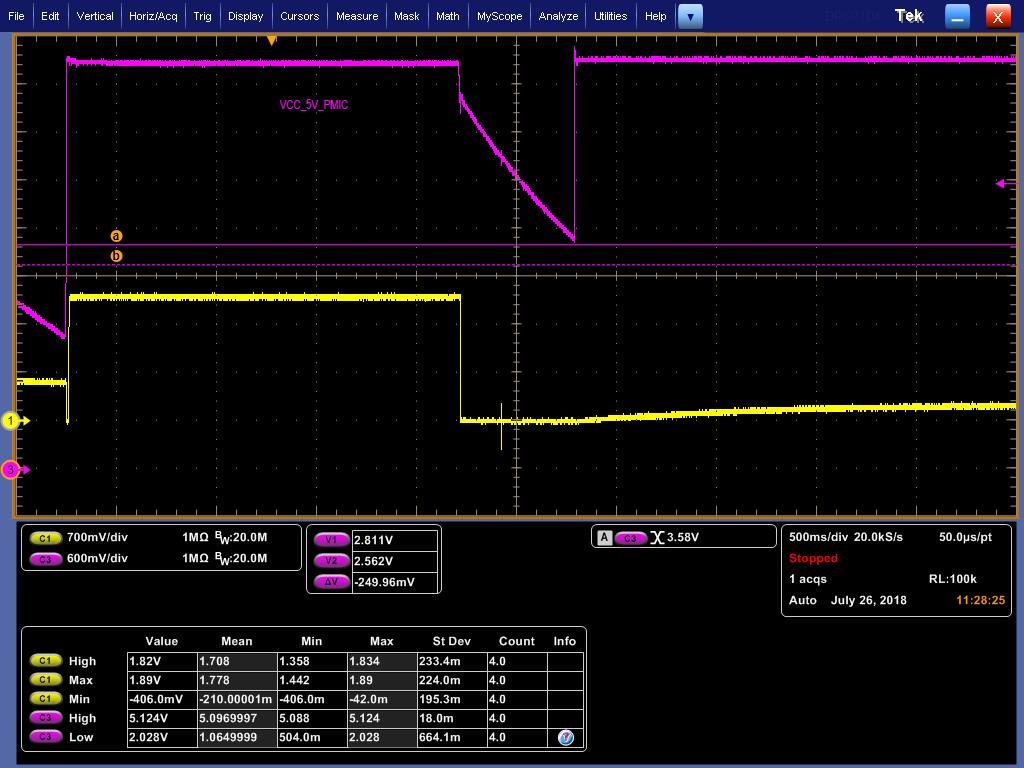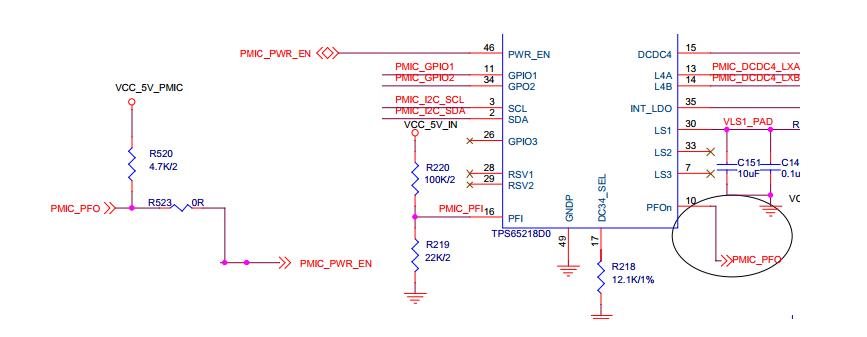Other Parts Discussed in Thread: AM4376, ,
Hi SIr
We used TPS65928 D1 version to work with AM4376
We found that the PMIC cannot work well if VCC_5V_PMIC power is dropped down and then recovered.
Below is the photo
1. VCC_5V_PMIC is the power of PMIC. The yellow signal is PMIC_PWR_EN which is connected to CPU's RTC_PMIC_EN pin.
2. VCC_5V_PMIC is dropped and then recovered back
3. and then DCDC5 channel and DCDC6 channel output are always 0.
Please advise.
BR
Yimin




